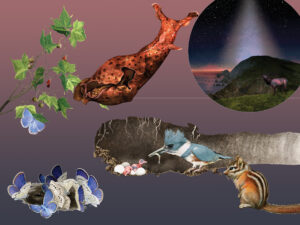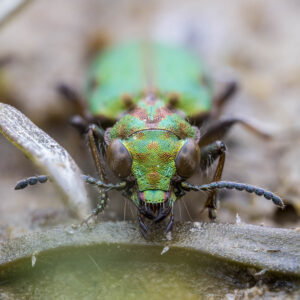Q: When deer have twins can they be born on different days? [Madeline, Oakhurst]
A: By any measure birth is a profound physiological event that requires
extraordinary changes in the mother’s body. These changes are further
compounded in mammals because mammalian fetuses undergo extensive
development in the womb and grow inside placenta attached to the uterine
wall. So not only is it a lot of effort to prepare for a birth, but the
birth process itself leaves a female deer totally vulnerable to predators
for at least 30 minutes.
Because these physiological preparations and dangers are so extreme it seems
unlikely that a doe could prepare her body for birth one day and then repeat
the process a day or two later. Instead, deer give birth to one to three
fawns (though four fawns have been recorded) that are typically born ten to
thirty minutes apart.
Predators would love to find a newborn fawn and a vulnerable doe so it’s
critical that the birth process happens quickly; immediately after birth
the female begins cleaning up the evidence, including eating placentas and
eating or licking up wastes. From this point on it is vitally important for
the survival of the fawns that they remain well-hidden when resting and that
they can both follow their mother when moving. For the first eight weeks,
the doe only visits her fawns for a few moments each day and the rest of the
time they rest by themselves. The birth of another fawn might reveal the
hiding place of an older fawn, and a younger fawn would not be able to keep
up when the older fawn starts following its mother.
The birth of twins on different days is probably very rare among mammals. It
has been recorded in humans but only under extraordinary medical care
because the birth of the first child happens prematurely and it’s nothing
short of a miracle if both twins survive. Deer have evolved to play it safe
and a doe is much better off giving birth in the shortest window of time
possible and living to give birth another year than trying to have produced
different fawns on different days and greatly increasing the risk to both
her and her young.
About the Naturalist






